How to clean an induction hob: 5 easy steps to ensure faultless results
How to clean an induction hob thoroughly without damaging the surface
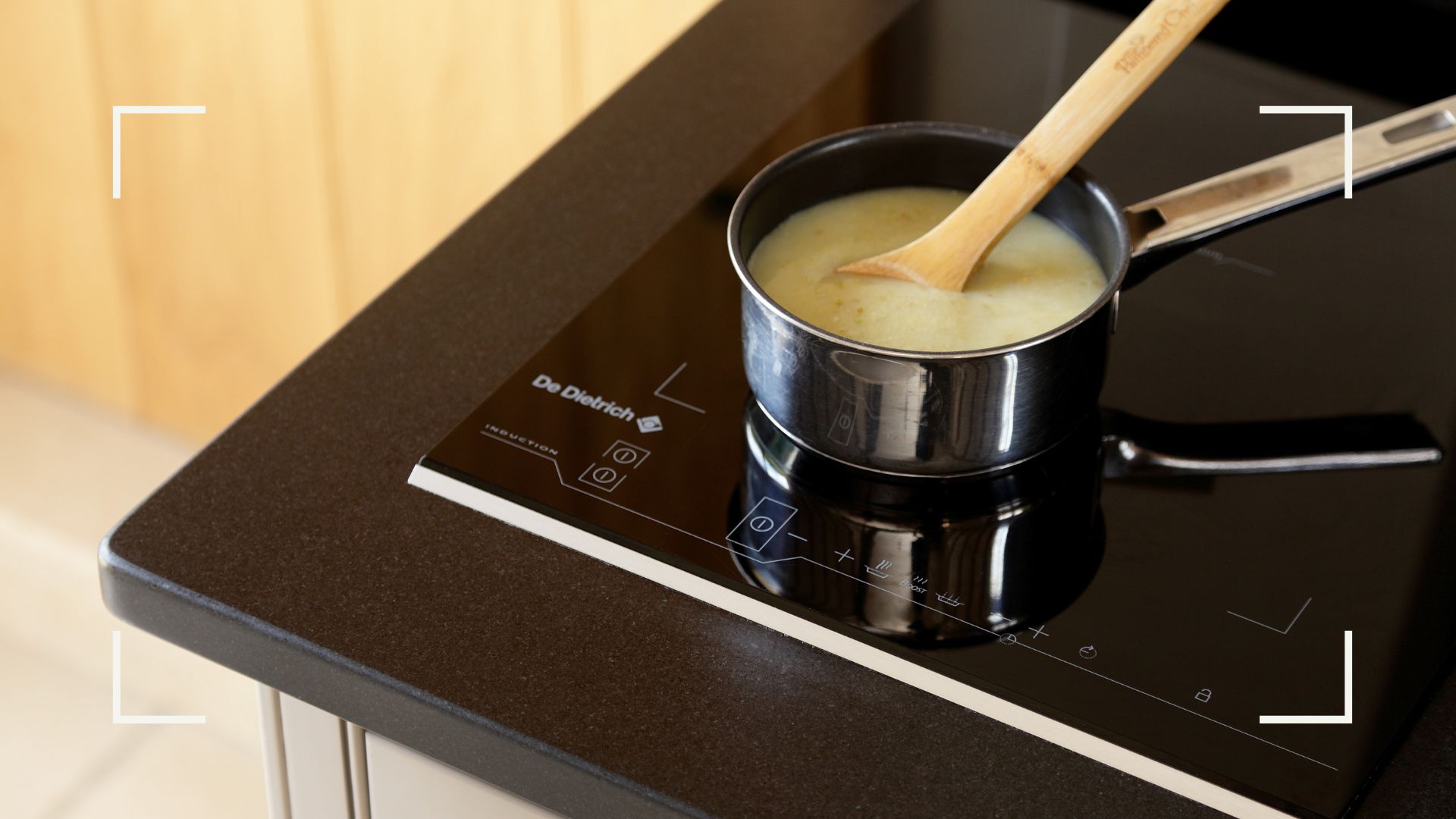

Knowing how to clean an induction hob efficiently is essential to getting the best cooking results and ensuring the longevity of this important kitchen appliance.
For many, cleaning the kitchen is a chore rather than an enjoyable pastime, and it can be tempting to save time by using the same cleaning tools and products for worktops, sinks and even cleaning your oven – but not your induction hob.
When it comes to cleaning an induction hob, even your best portable induction hob, a gentler approach is required because they are often made of glass or ceramic, and as we saw with how to clean a glass stovetop, they require suitable cleaning products and tools.
How to clean an induction hob
An induction hob works whereby copper induction coils receive an electrical current creating a magnetic field that interacts with the magnetic bases of induction cookware, creating heat.
What you need to know about an induction hob is that a build-up on the hob’s surface can reduce the effectiveness of the heating process because it acts as a barrier, so it’s imperative to keep on top of cooking spills and stains to prevent this layer from forming.
It’s a well-known fact that you need to use the best pans on an induction hob, but did you know that your choice of cleaning products is just as important?
How to clean an induction hob is about balancing the need to remove burnt-on cooking debris without scratching the surface of the induction hob. Therefore you’re best avoiding overly abrasive cleaners or sponges in favour of less abrasive cleaners specifically designed for glass or ceramic surfaces.
Sign up to our free daily email for the latest royal and entertainment news, interesting opinion, expert advice on styling and beauty trends, and no-nonsense guides to the health and wellness questions you want answered.
What you will need:
- Sponge
- Induction hob cleaner
- Microfibre cloths
- Baking soda (optional)
- Eco-friendly dish soap (optional)
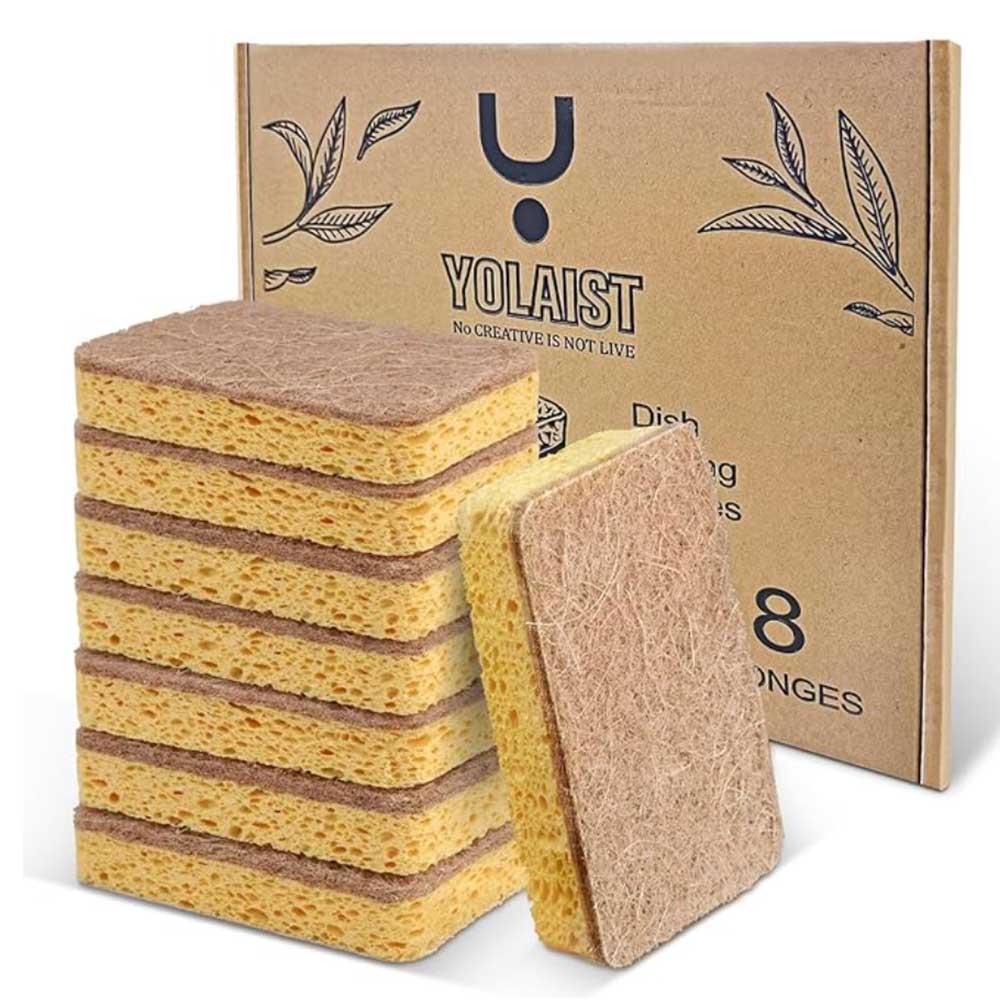
RRP: £8.99 | This 8-pack of biodegradable washing-up sponges for dishes has a super soft side to help clean your induction hob. DO NOT use the scrubbing side, because you risk scratching the surface.
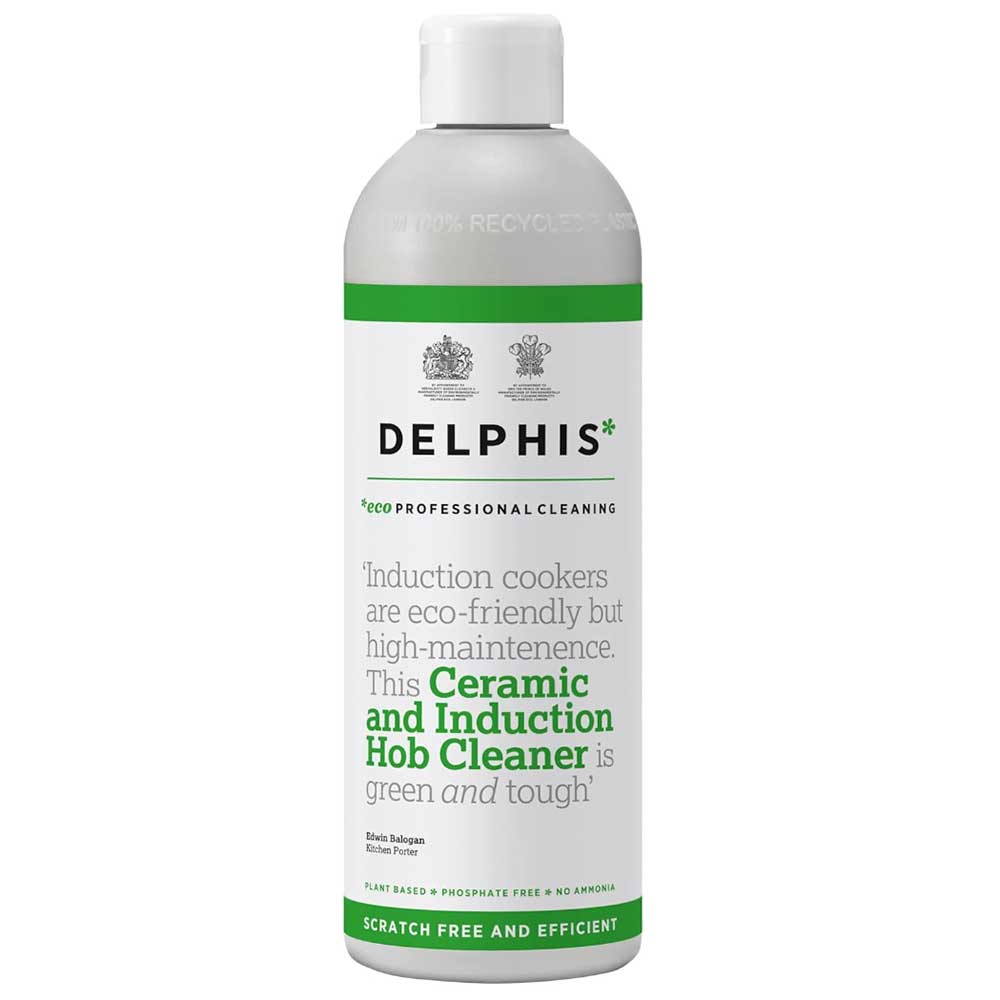
RRP: £4 | I use this particular product to clean my induction hob because it's natural. The 500ml Vegan-friendly hob cleaner cream is made from plant-derived renewable and sustainable surfactants.
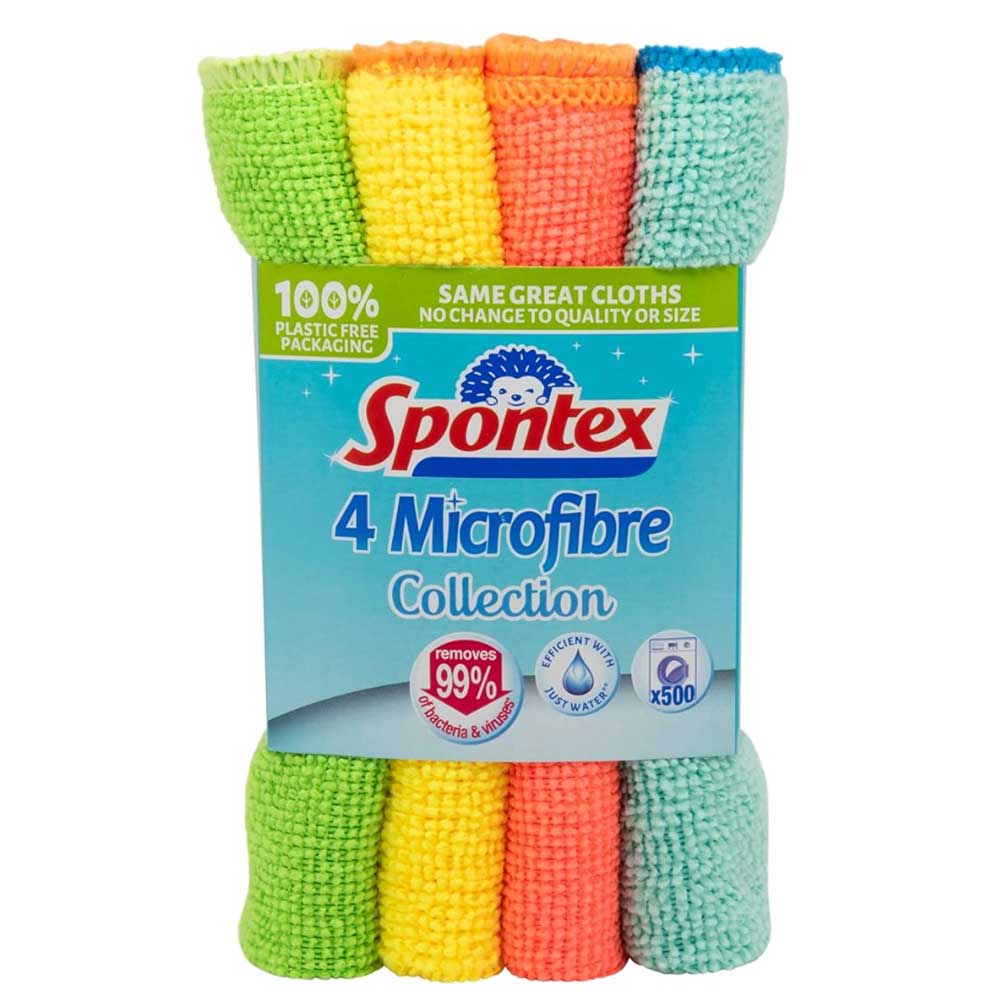
RRP: £3 | I recommend these super absorbent multi-purpose microfibre cleaning cloths in an array of rainbow bright colours to cheer up your chores.
1. Prepare the induction hob
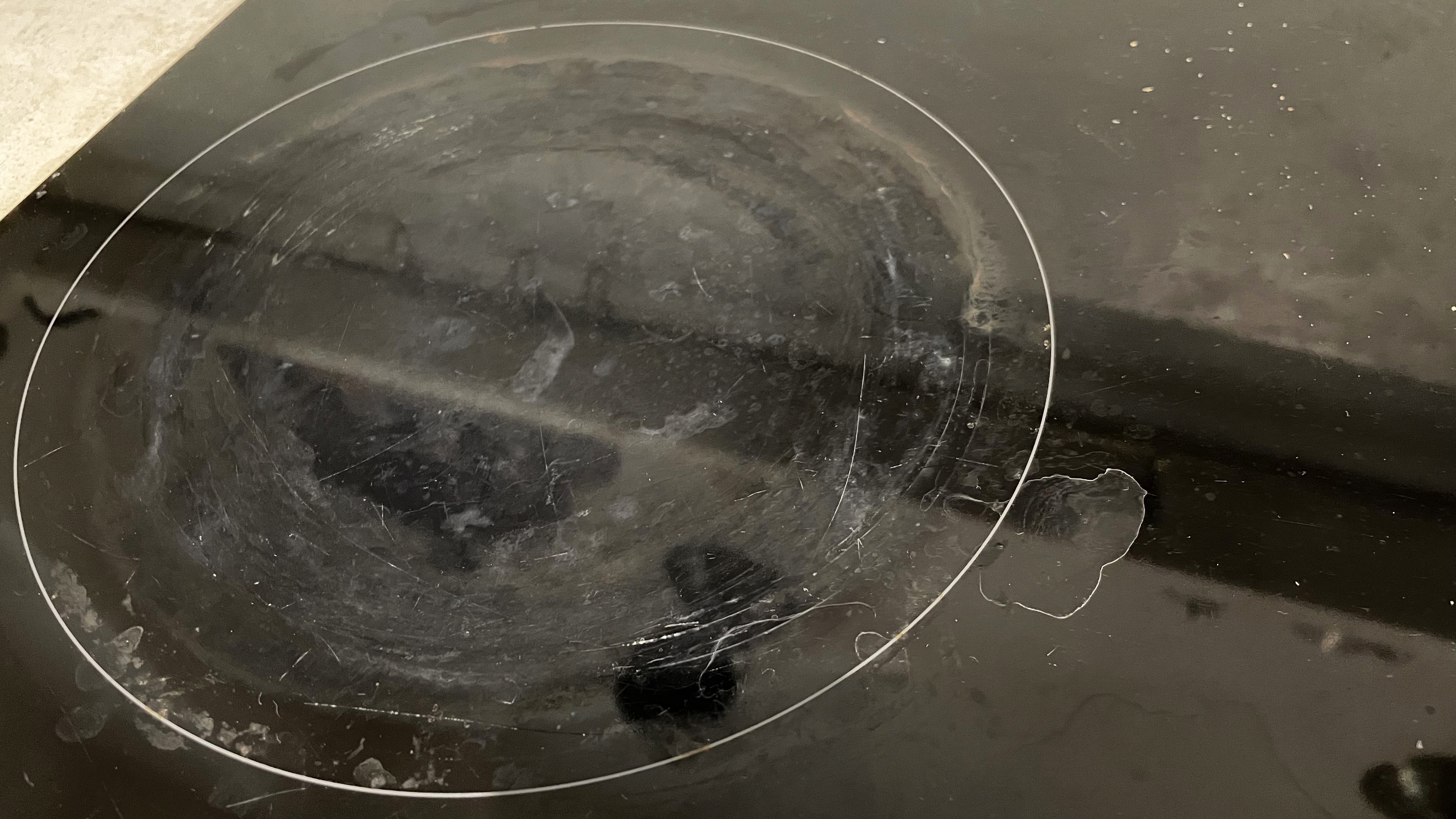
Ok, so this will hopefully seem obvious when it comes to cleaning an induction hob, but make sure the hob is off and completely cool before you start the cleaning process. Remove any cookware and utensils, so you have a completely clear surface to start work on.
Gather your cleaning products and check the seal around the edge of your induction hob to ensure that nothing can leak down under the hob once applied.
2. Apply the right cleaning products
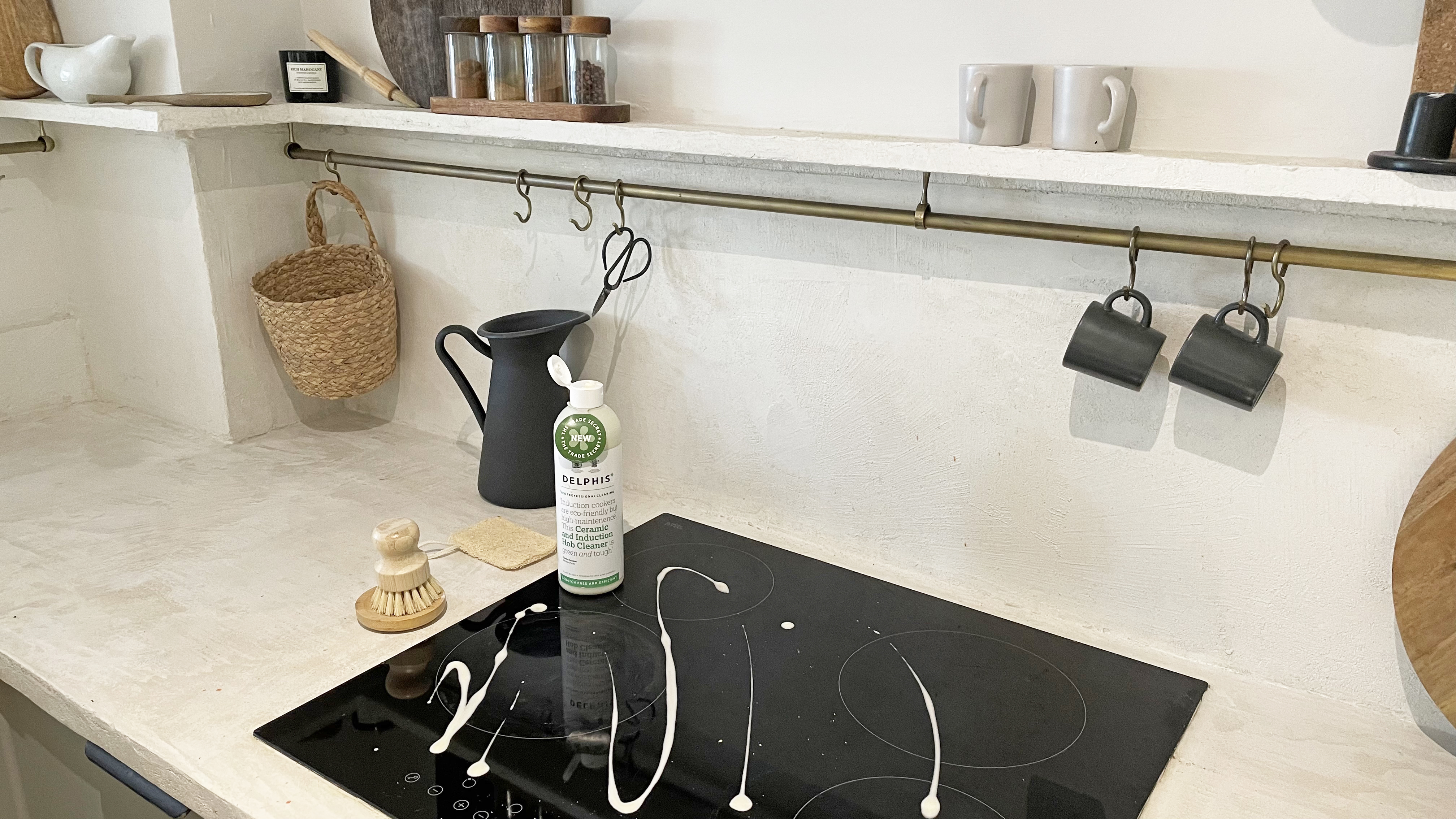
The best product to use will depend on the scale of the cleaning required. If you clean your induction hob every day, diluted, eco-friendly dish soap will likely suffice. If your hob is hidden beneath a layer of burnt-on cooking stains, then you might need something a little stronger.
If you prefer to buy a product that gets the job done, opt for an eco-friendly and non-abrasive specialist cleaner as this will get the results without harming the environment or your hob.
For an even more cost-effective approach, Bunmi Scott, Founder of It's All About Eco, recommends the following, "Mix up a paste of bicarbonate of soda and lukewarm water with a dash of eco-washing up liquid." Bicarbonate of soda is also great for cleaning an oven, and even for keeping your dishwasher fresh.
Apply your chosen cleaner onto the induction hob surface, be sure to check the manufacturer’s guidelines beforehand. Bunmi suggests, "Apply the mixture to the induction hop with a soft sponge or cloth".
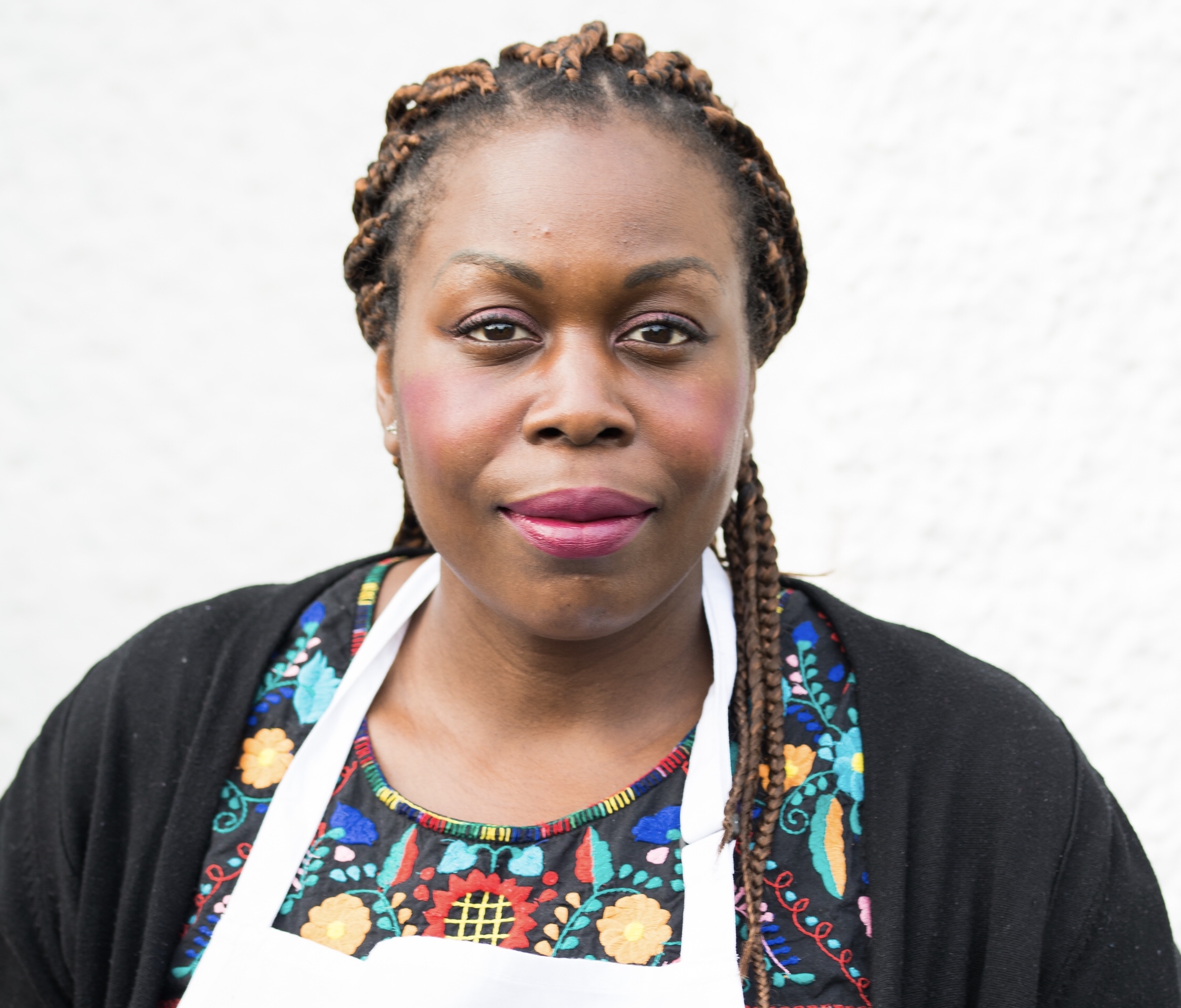
Bunmi Scott is the founder of It's All About Eco, an e-commerce business specialising in eco-friendly lifestyle essentials and green cleaning products with a brick-and-mortar refill store, too. Bunmi frequently shares her advice and easy-to-follow tutorials on how to live an eco-friendly lifestyle on her popular Instagram account.
3. Allow to soak
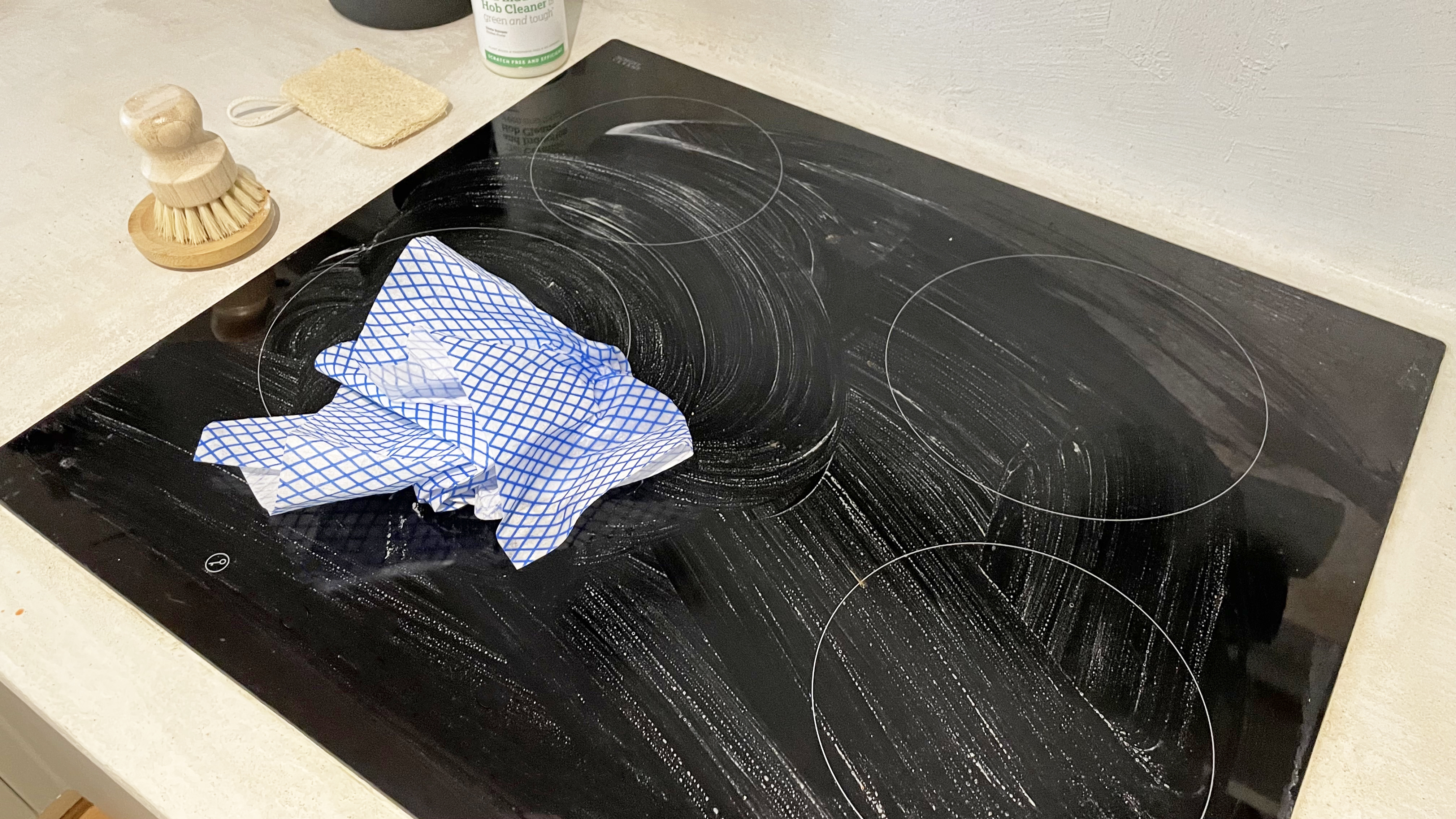
A top tip for easy cleaning is to allow the cleaning products to sit on the induction hob’s surface for a few minutes. This soaking time should help break down any burnt-on areas or particularly stubborn stains. The softer the burnt layer becomes, the less effort required to remove it and the less likely you are to scratch the surface.
"Rub it properly on the induction hob and leave for 10 to 15 minutes to target tougher burnt-on stains," advises Bunmi.
4. Scrub the hob surface if required
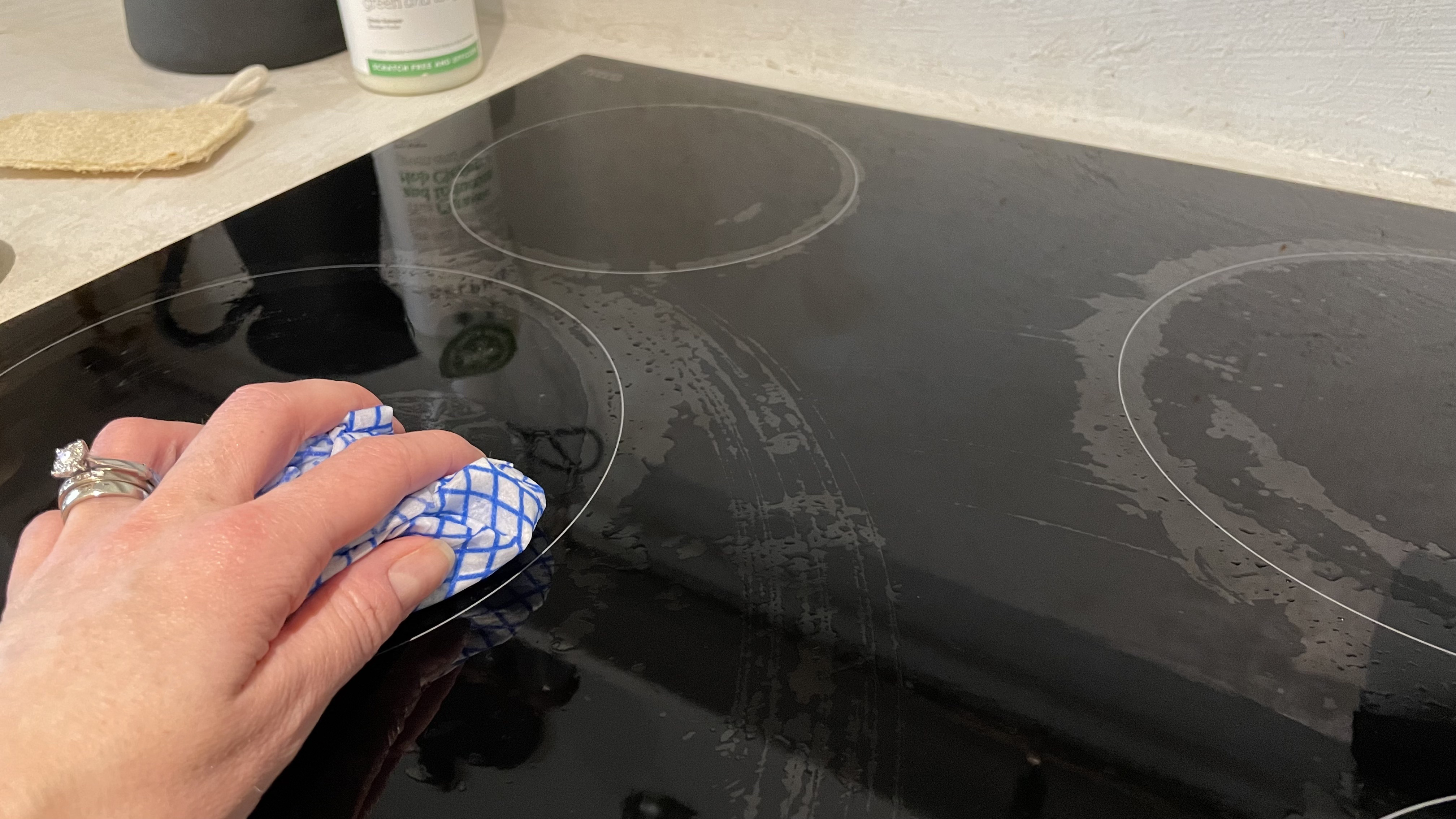
Hopefully, applying a liquid cleaner and allowing it to soak in will make the clean-up operation a breeze. However, if you find a little pressure is needed, take care not to scratch the surface of the induction hob.
There are plenty of ways to apply pressure during the cleaning process. I like to use a soft plastic cooking spatula to scrape off stubborn areas. Alternatively, a textured cleaning sponge will work fine, too.
Cleaning products comprised of natural materials like sisal provide enough abrasion to get good cleaning results and are better for the environment than the disposable plastic ones that sit in landfills for anywhere from one hundred to one thousand years before decomposing.
5. Wipe and dry

Once you’ve loosened all the residue on the surface of the induction hob, get a clean, damp sponge or microfibre cloth and wipe the surface clean. You might need to repeat this step a few times if the hob is particularly dirty, rinse the sponge and squeeze it out between wipes.
A cleaning hack to save you effort is to use a window squeegee at this stage to collect the soapy mix of cooking deposits into one small area, saving time and effort on the clean-up operation.
Bunmi advises, "Clean the hob with a damp cloth until the mixture has been fully cleaned off," then "Wipe the induction hob with a dry cloth until the hob shines."
FAQ
What is the best thing to clean an induction hob with?
A non-abrasive specialist induction hob cleaner is best to use on an induction hob as you need to be careful not to scratch the glass surface. There's no need for harsh chemicals as eco-friendly cleaning products get the job done just as well. You can make your own cleaning product using bicarbonate of soda, warm water and eco-friendly dish soap. But if you are cleaning with baking soda take care to make the paste smooth to ensure it doesn't scratch the surface.
Regular cleaning is the best way to keep your induction hob sparkling as this prevents burn marks and stains from building up and as is also the case for cleaning a cast iron skillet, be sure to clean as soon as possible after use.
How do I get burn marks off my induction hob?
To remove burn marks from your induction hob follow the cleaning process above, leaving the cleaner to soak in fully before attempting to remove the marks. Alternatively, Bunmi suggests the following "use bicarb and white vinegar to make a paste. Leave on the burnt areas for 30 to 40 mins depending on how bad the buns are," then "simply wipe clean with a cloth or sponge".
How do you get ring marks off an induction hob?
The best way to remove ring marks from an induction hob is to apply a non-abrasive cleaner and allow it to soak for a while. The soaking process loosens any burnt-on residue and means you can simply wipe the surface clean afterwards. Keeping on to of regular cleaning is key with an induction hob to prevent cooking residue from building up.
The key to success in cleaning an induction hob is to employ a regular cleaning routine, more than how often you clean inside an oven. This prevents the build-up of cooking residue, meaning you can rely on gentler products and less elbow grease.

Claire is a DIY and home interior writer specializing in budget room transformations, creative DIY projects, and resourceful home styling. Claire runs the popular home interiors blog ClaireDouglasStyling and shares all her DIY tips, tricks, and behind-the-scenes styling insights on her Instagram and Tiktok accounts. When she's not writing, Claire enjoys foraging for flowers and foliage and experimenting with interesting materials and decorating techniques to incorporate into future interior schemes; micro cement and postal tubes were a recent unusual but triumphant pairing. In her spare time, Claire enjoys creating floral installations for her home...the more bonkers the better!